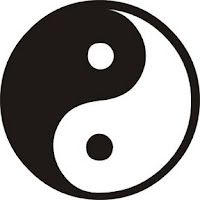I think the OP means "when you can feel by touch that he is off-balance, take a step toward him with your hands on him and maintaining peng, and he will fall over."
Taking a long time but I think we are getting there!
I think the OP means "when you can feel by touch that he is off-balance, take a step toward him with your hands on him and maintaining peng, and he will fall over."
Taijiquan is pretty sneaky: basically, we try to feel where the opponent is going (and how stiff he/she is) by touch, then sometimes feint by touch and try to make the opponent commit him/herself to an action based on our feint. Once they commit, we just help them on their way. We might give them a slight tug, and when they pull back by resisting, we push them away. Or ... we may make ourselves a target for a push from the opponent, then move out of the way and gently steer them a few degrees off as we watch them go by.If there's actual 'hands on' technique to making your opponent fall over then that's believable, now whether it's a workable or efficient technique I'll leave the CMA people to argue over.
Yes. Would you say that it's not enough to be soft all the time, but we need to control our ability to shift between soft and hard when it is necessary?Also having a very short moment of being tense can, if applied correctly, up root and throw your opponent off balance
Yes. Would you say that it's not enough to be soft all the time, but we need to control our ability to shift between soft and hard when it is necessary?
Of course, all the time, being sensitive?

It is actually the most basic natural posture that most people do to push, the point was to show force being applied and rooting. And if you tried to push me you are correct I would not maintain the stance or resist you I would change blend and be behind you.Oaktree, thanks for the nice pic. No offence, if i were that kid, my posture would be very different and there is no way you can maintain your stance or resist me. You cannot take for granted that your root will work against all manner of pushes.
Does judo have a technique that prevents someone's getting such a good grip on one's clothing?Most people in the internal arts don't know how to handle something like this:
I'm not a judoka but I imagine in their self defense they do. But I think judoka don't mind having their clothes grabbed because they are use to it and it sets up for a counter throw.Does judo have a technique that prevents someone's getting such a good grip on one's clothing?
Grip fighting is a huge part of judo. High level judoka are very good at getting superior grips while not allowing ther opponents to get an effective grip.Does judo have a technique that prevents someone's getting such a good grip on one's clothing?

if i extend my arm in a soft manner, without moving my body or generating jin, and say my partner tries to stop the movement of my arm with his fingers, he will feel that my energy is very strong and he will not be able to do it, while i would feel as if i'm moving through next to no resistance (effortless). While my arm has this yang, it also has ying, for it is still soft like a pillow and relaxed.